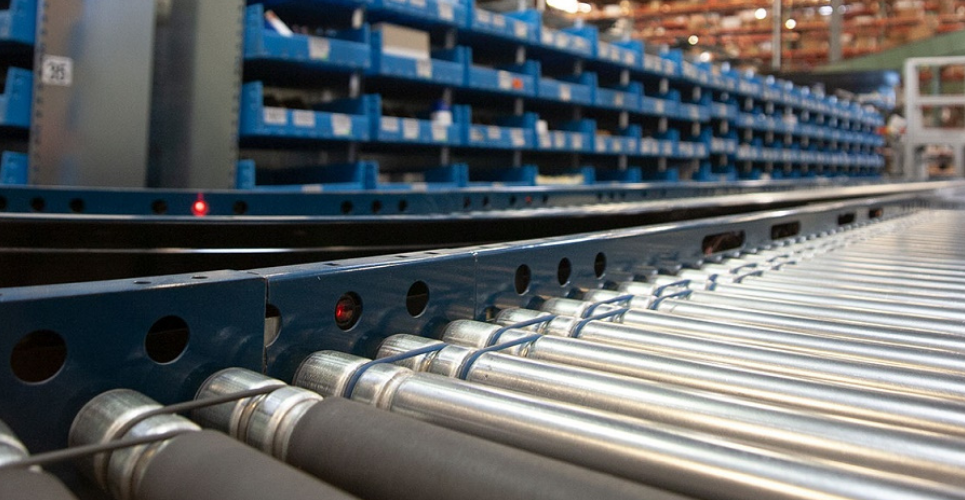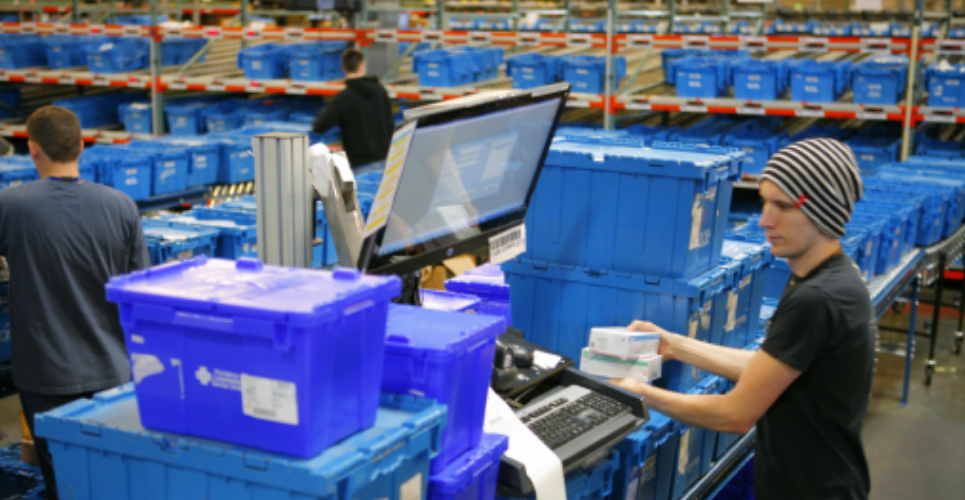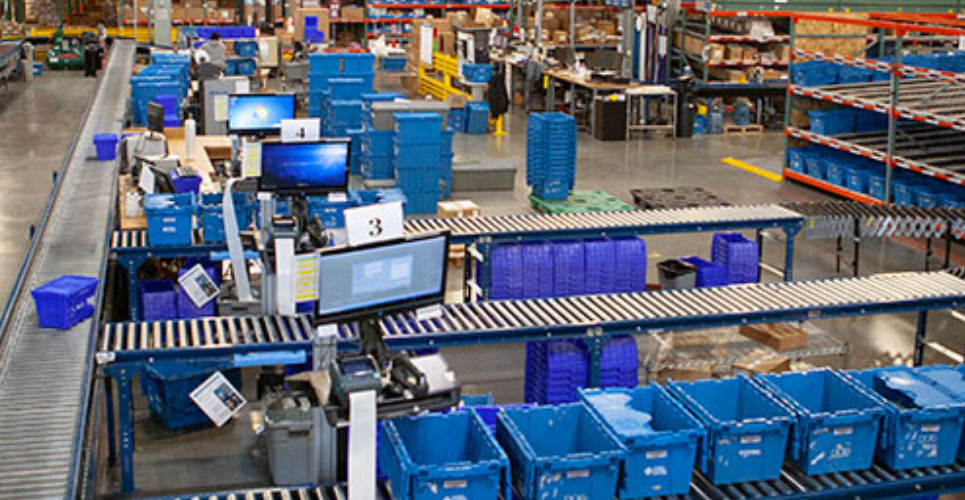5 Things to Consider Before Choosing a WMS

Warehouse Management Software (WMS) can help you optimize how your warehouse and/or distribution center functions. It tracks the storage and movement of inventory in real time, reducing errors, improving efficiencies, and increasing productivity overall. But over the past few years as warehouse and distribution operations have grown more and more complex, sorting through all the WMS platforms and features now available has become increasingly difficult and time-consuming. To help, we’ve prepared this list of the five essential questions you need to answer to find the WMS solution that’s best for your business:
Does the WMS vendor you’re considering have proven success in your industry and with challenges similar to yours?

Every industry—whether it’s food and beverage, pharmaceuticals, medical devices, e-commerce, manufacturing, or any other—has a distinct set of operational processes and methods that can be supported by a WMS.
That’s why it is critical to make sure you’re partnering with a WMS vendor with experience in your operational environment and with business challenges similar to yours. Ask potential providers about their work histories and how they have helped drive measurable improvements in warehouse management for companies in your industry.
Be aware that many basic WMS systems are bolt-on ERP modules that may lack functionality for your particular environment. Instead, look for a WMS vendor team with the skillset to perform the appropriate analysis—essentially auditing every single process step as part of the system design—and then make the most meaningful recommendations to improve your operations. Of course, finding the right vendor also involves trust.
Your WMS and WMS vendor will become the cornerstone of your warehouse operations, storing and managing your company’s most important products and information. Be sure to choose a solution that’s backed by a company with a proven “long term” track record of reliability, consistency, upgradeability, ongoing support and low cost of ownership relative to the ROI delivered.
[Take it with you. Download Now]
Is the WMS solution architected to drive process improvement?

Typically, there are at least two layers of capabilities in a WMS solution and/or three depending how it is defined and your vendor capabilities
The first is Warehouse Management System (WMS) capabilities which can interface/integrate with the Enterprise Resource Planning (ERP) platform.
The second is the actual Warehouse Execution System (WES) capabilities which optimize these capabilities and can often be confused with Warehouse Control System (WCS) capabilities. Make sure the solution you choose has the necessary layers and specifically includes the WES/WCS architecture required to drive process improvement. Put another way, you do not want software that will simply replicate how you receive, replenish, pick, cycle count, etc. on your ERP system.
Instead, you want a WMS that’s actually built towards optimizing those processes. Keep in mind that WMS systems sold as modules often inherit all of the inefficiencies of the ERP architecture they get bolted onto. They’re not built to direct operations, improve accuracies, ramp up efficiencies, increase productivity or interface/control automation equipment. They’re simply built around the ERP architecture—and that can lead to significant shortcomings in the functionality needed to drive process improvement. For example, if you’re moving from a manual paper-based process to mobile devices, a bolt-on WMS module may continue to force operators through redundant non-value added steps for routine warehouse operations.
[Take it with you. Download Now]
Will the WMS solution be able to scale and adapt as your business grows and technology advances?

The warehouse environment is complex—and getting more so all the time.
You need a WMS that can scale and adapt as your business, or your industry as a whole, changes. Maybe you’re in an environment that requires hands-free picking and you might want to implement voice-picking in the future.
Or maybe you’re thinking that, down the road, you will have to add another kind of automation, whether that’s vertical carousels, horizontal carousels, vertical lift modules, or some other form of a robotic or AS/RS goods-to-person hardware.
Your goal should be to find a WMS solution that can support whatever you need to tackle today and whatever you’re looking to tackle in the future, yet not be overly customized or complex to do so. Are you among the many manufacturers and distributors currently adapting to the omnichannel? Is the technology you’re using up to the task?
You’ll save time and resources by selecting a WMS provider with the expertise and agility to keep pace with your changing business needs. You want to avoid having to continually add third-party solutions customized or adapted/bolted onto to your WMS as your business grows. Once you start using more than one or two bolt-on modules, you have created a customized environment that’s difficult and costly to maintain and/or upgrade
[Take it with you. Download Now]
How will the WMS solution be implemented and what will determine success?

Ask the vendors you’re considering to describe precisely how your WMS solution will be deployed and how the results will be measured.
The WMS provider you choose should be able to explain how WMS will improve your business processes—and they should be able to do so using terminology that you understand.
What’s important here is that the vendor is knowledgeable not just about the software, but also about configuring the software in a way that will optimize your warehouse operations. In addition, there needs to be a way to measure those improvements. Talk to the vendors you’re considering about the results they have seen for process improvement in similar industries with similar challenges and look for software solution but equally important a team that fully understands the steps your operators have to go through to complete their tasks. That’s the best way to make sure you are getting a WMS solution that will give you real, quantifiable results.
Last but not least, make sure the solution and vendor you choose will deliver not just upfront ROI but long term ROI relative to your cost of ownership.
[Take it with you. Download Now]
How easily will the WMS solution you’re considering integrate with your existing ERP system?

Ask the vendors you’re considering to describe precisely how your WMS solution will be deployed and how the results will be measured.
The WMS provider you choose should be able to explain how WMS will improve your business processes—and they should be able to do so using terminology that you understand.
What’s important here is that the vendor is knowledgeable not just about the software, but also about configuring the software in a way that will optimize your warehouse operations. In addition, there needs to be a way to measure those improvements. Talk to the vendors you’re considering about the results they have seen for process improvement in similar industries with similar challenges and look for software solution but equally important a team that fully understands the steps your operators have to go through to complete their tasks. That’s the best way to make sure you are getting a WMS solution that will give you real, quantifiable results.
Last but not least, make sure the solution and vendor you choose will deliver not just upfront ROI but long term ROI relative to your cost of ownership.
[Take it with you. Download Now]
Take it With You
Download the Guide in pdf format.
